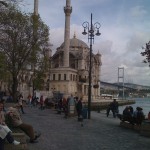
Iskender Pala Writing
“The relation of a city to water is the kind of primal wedlock; and it is first the water, the most extravagant lover of all times, who embraces the lovers belonging to no one but each other. No city is possible to build up where no water flows; and it is water that builds them up. When brilliance and grace pours forth into the streets, all the lavish wall fountains, springs, cisterns come to light all around.
One’s lifetime in the city is on par with what a stream of water does so being always protected by the never-ending time… Water is the basis on which all life comes about. As in the way plants blossom when aroused by water. Only then comes the hope for fleshy fruits to sprout over their branches. The Holy Koran can be quoted in point as saying “from water have we created all embodied in a form with life” which, in Istanbul, takes shape into a spirit with mostly flow-easy, but sometimes level looks.
Water is the humankind. It is to the water that humans are born and decease. They wash you up at birth, they wash you up at death. Water implies crossing a threshold; a transition, a new phase, an act of transcending the older one. The way being in Istanbul feels epitomizes feeling wholly rejuvenated in a city.
Water is the beloved. Into the water do all the poets with a yearning for the beloved gaze. Expressions of the ultimate remembrace come often through a yearning, a saudade for water. The saudade permeates Istanbul…
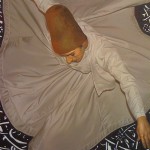
Water is the lover. Lovers have always visited their sojourns in water, sobbing out sad stories bringing tears not only in their eyes, but also in others’. Istanbul is a bushfire of love concealed as a teardrop…
Water is the panacea to both the love and the brushfire; it is the ultimate reunifier, and a sedative for many yearnings. Water is itself love, at its purest, just like the chemistry of H2O itself with elements to not only burn, but also extinguish fire. Just think of the romance of the wild-at-heart fighting back tears. Istanbul refers to water at its state of love, to water reuniting the seas that flow apart.
Istanbul is peal made in water; just water, perhaps, to quench your thirst…But whatever the thirst is for, Istanbul is a generous as water just as in rain whose job is to rain.
Come over!… Of whatever time and place you might be, just come over!… Istanbul is full with life.”
<Iskender Pala>
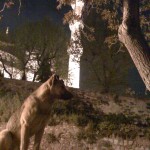
Istanbul 2010 – European Capital of Culture
Istanbul, Turkey has been named the “European Capital of Culture” in 2010 (www.istanbul2010.org). A city that literally forms a bridge between the Occident and the Orient, it welcomes visitors from all over the world to experience its beautiful setting of contrasts and culture.
Although I’ve never lived in Istanbul, I regard it as a second home (or third home now that I’ve moved to London!). Most of my maternal family has lived in Istanbul at some point during my life and I’ve had the pleasure of visiting eight times since I was six years old. In my adult years, I’ve traveled more often to Turkey and attempted to visit every two years.
My recent visit was the first since I had moved to London as an expat American-Turk. Because I’m less than a four-hour flight away from Istanbul, my visit has been a little less hectic than usual, mostly because I know I will be back again soon. Although friends and family love to surprise me with fabulous outings to Ortakoy, Nisantasi, Taksim, Sariyer, Sultanahmet, Sezen Aksu concert, and the Hidrellez Festival.
Personal goals for this visit were to spend time with my anneanne (maternal grandmother), visit with other family and friends, and expose David (my partner) to my other cultural identity. He’s known me as a “yank” and now he’s seen me in action as a Turk as well.
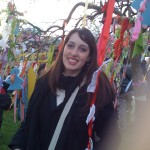
My identity is something that I can never fully describe. Now that I’m living in London, it’s become even more difficult. I find myself protecting America, the UK and Turkey when I speak to people who aren’t familiar with those countries. I have ties to all three places and feel obligated to serve as an unofficial ambassador. In the ambassadorial spirit, I’d like to touch on a few Istanbul experiences associated with: language, culture/religion, and the natural/built environment.
Language
Although I’m not as fluent as I’d like to be, my conversational Turkish is sufficient to communicate basic thoughts and responses to family and friends’ many questions. After my nervousness subsided, I successfully translated for David what was being said around him. I paraphrased most of the conversation topics as my brain began to hurt. Luckily, most of my family and friends know a bit of English, so they would help along the way.
I found my Turkish improving as I engaged in challenging situations. Unfortunately, my grandmother was not feeling well during my trip. I was thrown into situations that I had never navigated in the context of healthcare. My sozluk (dictionary) was of no help as I communicated with doctors, pharmacists, and laboratory personnel. These difficult situations forced me to muddle through explanations allowing my Turkish fluency to progress. I still have quite a way to go to be fluent in a professional manner, but I’m proud of my accomplishments in less than 2 weeks.
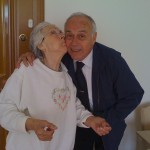
Culture/Religion
Culture is a set of shared community values that have become an accepted “way of life.” For example, greeting each other by kissing twice on the cheek is a cultural norm in Turkey. David was a bit shocked that men also kiss each other on the cheeks as he was only used to that occurring between opposite genders. But, he was relieved to see that you only touch cheeks rather than lay two big wet kisses on the other person!
Turkey is undergoing an ideological shift toward embracing Islam as part of the political arena. This departure from the secular democracy espoused by Ataturk (father of modern Turkey) is demonstrated not only in the political context but also in the day-to-day, secular way of life. As an example, covering hair in accordance with Islamic rules for females is a matter of choice for most Istanbul women.
However, growing tensions are visible between women who cover their hair as well as their bodies in black burkas and long gowns and those who chose to keep their hair uncovered. I experienced a hostile verbal encounter on the street between my pro-secular-government friend and a woman covered in black. Personally, I have mixed feelings. On one hand, I am a proponent of free speech, expression and religion. As long as no one is physically hurt or threatened, I encourage people to live in accordance with values that make them feel comfortable and encourage the fundamentals of being a good person. On the other hand, I’m quite proud of Turkey’s secular democracy and the distinct separation of church and state. As long as the fundamental political structure remains the same and Turkey continues to be a bridge between east and west, I respect everyone’s personal cultural and religious choices.
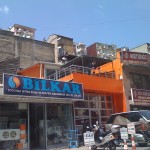
Built/Natural Environment
What can I say about the built environment in Istanbul? From a city planner perspective, I’m not sure whether to be incredibly shocked by the extremely organic and obviously unplanned built elements, or to be proud that the city environment has taken a unique design that cannot be duplicated. It’s hard to grasp how old the city is. As the capital and center of three major empires: Roman, Byzantine, and Ottoman, it’s undergone transformation after transformation – a true example of urban redevelopment, regeneration and revitalization.
“No city is possible to build up where no water flows; and it is water that builds them up.” – Iskender Pala
Istanbul is a city encompassing two continents – Europe and Asia – bisected by the Bosporus Straight. The Bosporus and adjoining water bodies connecting the Black Sea to the Mediterranean Sea is magical and carries centuries of man’s history. Some of the most breathtaking places in Istanbul consist of Bosporus Straight views. The mélange of old and new architecture on rolling hills is bordered by scenic views of the water. Istanbul’s built environment and natural environment are symbotic and work together to create an unforgettable place.
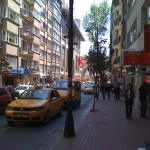
In our current age of technological advances, Istanbul is embracing sustainable development concepts and investing in developing transportation and cultural infrastructure. I look forward to Istanbul demonstrating these built/natural environment elements, and especially the social component of sustainability with a focus on people programming as the European Capital of Culture in 2010 (www.istanbul2010.org). I encourage you to visit Istanbul too and share your thoughts with me.
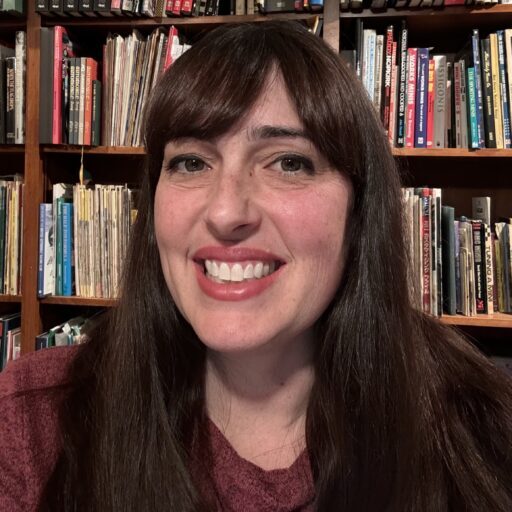
I thought Instanbul was lovely when I visited there in 2005. Toured the City and countryside while doing a cruise. Also went to Turkey in Asia Minor and went to somone’s home for lunch. Delicious!
Hope you are enjoying London. That was my other cruise visit. Been watch Wimbledon.
FORMA is down to very few and the workload is even less. One day a week for the summer and no vacation or sick time on that schedule. Huh.
I soon may also be on the bread line.
Take care.